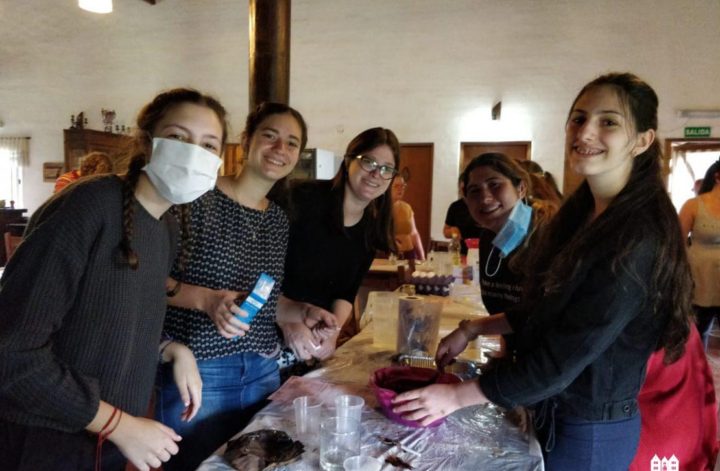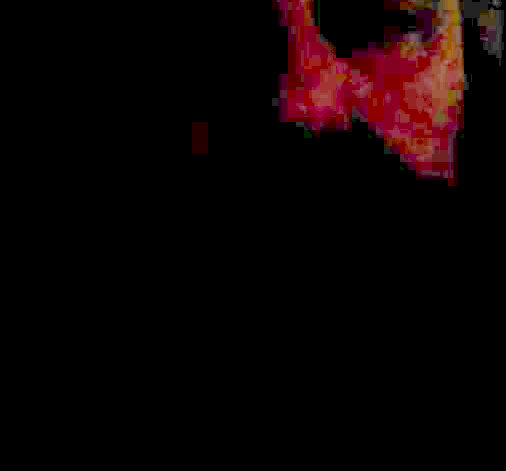“Technology is not here simply to provide utility. It is also meant as a springboard to wonder, allowing us to conceive our reality in ways previously unimaginable.
“Technology provides an ever-expanding bank of metaphor to crystallize the most abstract ideas into tangible form.
“Don’t think that this is a mere side benefit of technology. On the contrary, for this purpose these ideas were embedded into the universe from the six days of creation, only to unfold in our times.”
— The Lubavitcher Rebbe, Rabbi Menachem M. Schneerson1
What if you could step back in time, walk remembered streets, play with an old playmate, see things from the past you never thought you’d see again, except in hazy memories?
Recently, I did just that. As I am notMy breath caught in my throat terribly technologically oriented, I asked my husband if there was any way I could see a picture of the apartment building my grandparents lived in for more than 60 years. He Googled the address on Crown Street in Brooklyn, N.Y., and there it was.
The picture was so clear I felt I had walked into it and actually stood in front of the building. Built in 1923, the red brick building with the cement courtyard looked exactly as I remembered it. I felt as if I could walk up the front steps, go inside and climb the stairs to 4R, where a mezuzah held pride of place on the door frame. In place of the reality of sitting in my recliner in Alabama, a woman of middle age, I was a child again, visiting my revered and beloved grandparents.
G‑d is the only eye that sees all and the only ear that hears all. Only He is beyond time and space. The purpose of today’s technology, it seems, is to understand Judaism’s holy concepts and our relationship to G‑d in terms of our fast-changing world. And now, among the mystical openings G‑d allows us is the ability to pull back the curtain of the long past and retrieve memories as if they were yesterday’s events.
As I pursue my intended life as a Jew, I can ascribe my progress in good part to the memories made in Crown Heights, the epicenter of the Chabad-Lubavitch movement. My grandmother told a story of walking down the street and chancing upon the Rebbe. Although he did not know her, he graciously greeted her with, Gut morgen, mein tochter, “Good morning, my daughter.” The warmth and Jewish inclusiveness of that story was not lost on me. Though my grandparents weren’t Chabad Jews, they were observant and passed meaningful legacies to me that now, later in life, I am rediscovering.
Every Shabbat began with lighting candles. I was taught to stand respectfully and quietly as my grandmother covered her head and covered her eyes with her hands and prayed. I now do the same, knowing that she is near as I light mine, happy that I am carrying on a tradition near to her heart. It is as meaningful to me to light those candles, as it was to her; when I do, I feel a powerful connection to G‑d and to a sacred tradition.
On Saturday mornings, we went either toMy grandparents achieved their goal the Orthodox shul nearby or a large Conservative synagogue that once stood on Eastern Parkway. Although I was very young, I remember the white curtain that separated the men from the women in the Orthodox shul, and the sonorous voice of my grandpa when he was called up to the bima to read a Torah portion. I believe my grandparents intended to offer me the experience of participation in Jewish life—one that I did not get in my family home. I can still hear in my head the experience of singing Ein Keloheinu. My grandparents achieved their goal. As I move on in my journey to my best Jewish self, I carry forward the remembered songs and prayers, and surprise myself in the clarity and beauty of those memories.
Because my grandparents also kept kosher, my grandma and I spent time in her tiny kitchen preparing food we had bought in kosher stores on Empire Boulevard. We often walked to several stores to purchase kosher meat, fish and cheese. I remember the green string bags we carried the food home in and how we stowed the food in the tiny refrigerator. We ate lamb chops or matzah-ball soup or a dairy meal with farmer’s cheese (how I miss that delicacy) at the little table next to the window overlooking the courtyard. These days, I live in Alabama, where I comb the frozen-food aisles in local grocery stores for a kosher treat. Finding potato knishes is like buying a piece of heaven.
Until recently, I could not have conceived of “walking down a street” from my remembered childhood—as the Rebbe described it, a, “technology … allowing us to conceive our reality in ways previously unimaginable.” I looked up at the center second-story window on the right side of the building and saw in my mind’s eye the terracotta pots with the bright-red geraniums that always grew there. I could look across the street and see the bench where my grandma often sat to enjoy the warmth of the sun and peruse a Yiddish newspaper or read a book.
Although she came to the United States from a shtetl in Poland when she was 6 years old, her diction was perfect. She loved words and taught middle-school reading and English in the inner-city schools of New York for nearly 50 years. In this tour of the past, I was reminded of how I loved the cadence and sound of her voice quoting verses such as those from Longfellow’s Evangeline: “This is the forest primeval, the murmuring pines and the hemlocks … ”
Looking at the scene brought that beautiful gravelly voice out of the past and into my ears.
My visits to my grandparents took place when I was very young, between about the ages of 5 and 12. Gwennie, a little girl about my age who also lived in the building, was often my playmate. WeI loved the cadence and sound of her voice would bring our Spaulding “Pinky” balls outside and play handball against the solid surface on either side of the steps leading into the building. As I drank in the sight of the building, I could hear the slap of the ball against the wall and our little-girl laughter as we played. When my grandma needed me to come back inside, she would lean out and call to me from that second-story window or from the kitchen window that faced the fire escape over the courtyard.
With tears in my eyes of both joy and of sadness, I ended my visit into the past by closing my laptop. I stopped for a moment to murmur a prayer of thanks to G‑d not only for the marvels of technology, but for the vivid reminder that both He—and those we love who have gone before—are not far away or unreachable. We have only to use the power of hearts, minds and the scientific capabilities our Creator established at the beginning of time.



